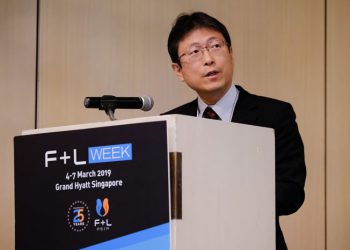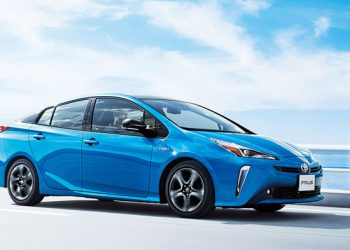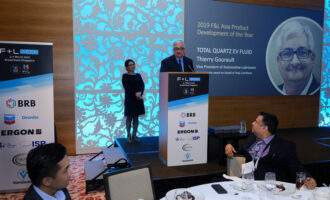
JASO Ultra-Low Viscosity PCMO specification on track for October release
Powertrain electrification is one of the headline-grabbing options to combat the rise in global vehicle emissions. But before this new wave of technology can really take off, significant advancements are required in charging infrastructure and battery technology. Thus, by 2035, 80% of vehicles sold will still utilise some form of internal combustion engine (ICE), according to Kazuo Yamamori, project manager of the Tribology Material Department at Toyota Motor Corporation in Japan. Even in 2050, 60% of vehicles sold will continue to rely on the ICE, he says. Improving fuel economy (FE) performance of conventional ICEs, therefore, remains a high priority for OEMs to meet their carbon emission reduction obligations.
An important part of this equation is the use of ultra-low viscosity engine oils, Yamamori says. Low viscosity oil delivers less friction and can boost fuel efficiency. Japan, already one of the forerunners in the development and adoption of lower viscosity engine oils, has a growing appetite for even lower viscosity grades to unlock the highest possible vehicle performance.
A few years ago, an industry collaboration between the Japan Automobile Manufacturers Association (JAMA), the Petroleum Association of Japan (PAJ), and the Society of Automotive Engineers of Japan (JSAE) resulted in the formation of the JASO Next Generation Gasoline Engine Oil Task Force. The Task Force has been responsible for the creation of a new JASO 0W-8 and 0W-12 standard for the Japanese market, the first specification of its kind in Japan.

Yamamori, who joined Toyota in 1997 and has been a leader of JAMA’s PCMO Working Group and chairman of JASO’s Engine Oil Sub-Committee since 2014, announced at F+L Week 2019 that the new JASO ultra-low viscosity engine oil specification (GLV-1) will be released in April 2019. The targeted date for the market introduction of JASO GLV-1 is October 2019, says Yamamori.
The fact that the specification remains on track to meet the initial signposted launch dates speaks volumes for the development process, Japan’s willingness to innovate, and a lower level of organisational complexity that exists in Japan compared with other markets.
Determination of the draft specification by JAMA and PAJ was completed in October 2018, with the associations currently preparing the application manual of the new JASO standard. JSAE is undergoing approval preparation, following completion of standardization work in November last year.
During his F+L Week presentation, Yamamori emphasised an overwhelming need for the new JASO gasoline engine oil standard. SAE 8 was specified by SAE J300 in January 2015, whereas the long-awaited ILSAC GF-6B is not expected for first licensing for another 12-15 months. A new GF-6 Sequence VIF Test will evaluate the fuel economy (FE) of SAE 0W-16 oils, though, it is not applicable for SAE 0W-12 or below, says Yamamori. JAMA, PAJ and JSAE deemed a new FE test method in Japan was required. The JASO 0W-8 standard will complement the GF-6B specification and beyond.
The draft GLV-1 specification includes the option of using the Firing FE Test, with a minimum 1.1% FE improvement versus a JASO baseline oil, or the Motoring FE Test (Japan mode). The Motoring FE Test necessitates a 2.0% minimum improvement for 0W-8, and 1.7% for 0W-12 oils.

JASO GLV-1 employs the Sequence IIIH Test Method for oil thickening to GF-5 level, and either the valve train wear test Sequence IVA from GF-5 or GF-6’s Sequence IVB, as the limits are not yet finalised for Sequence IVB at the time of the presentation in March 2019. For sludge and varnish testing, Sequence VH to GF-6 level is employed, and the new Sequence X Chain Wear Test will require a 0.085 maximum, tentatively equivalent to the GF-6 level. There is no corresponding test in GF-5, notes Yamamori, though once the GF-6 limit for the test is finalised the JASO specification will adopt them, he says. Bench testing will also adopt GF-6B Limits.
Yamamori outlined the new test procedure for evaluating FE. The Firing FE Test involves a six-step procedure using a Toyota 2ZR-FXE, 4 cylinder in-line engine. The engine is 1,797cc, with a DOHC 4-valve, chain drive. The test procedure includes calibration with a JASO baseline oil, candidate oil testing, and enables the calculation of the FE improvement percentage relative to the JASO baseline calibration oil.
The alternative JASO MR20DD motoring FE test uses a NISSAN MR20DD 2.0 Litre L4, valve train type Bucket type DOHC, to calculate Japanese and European WLTC FE improvement. The test can discriminate 0W-8 and motor oil friction modifier effect, says Yamamori, and operates at variable engine speeds from 650 rpm to 2800 rpm. The correlation factor to calculate fuel consumption is decided by the actual vehicle tests.
echo '






